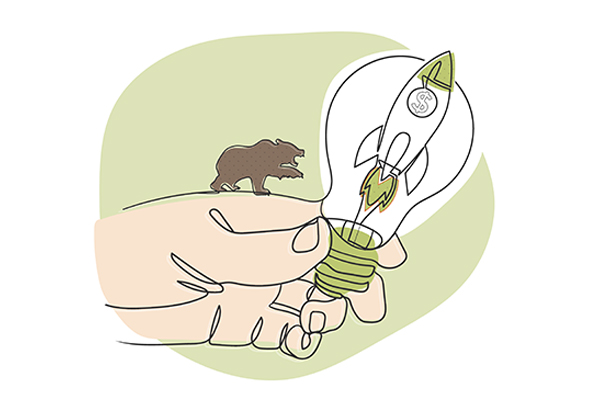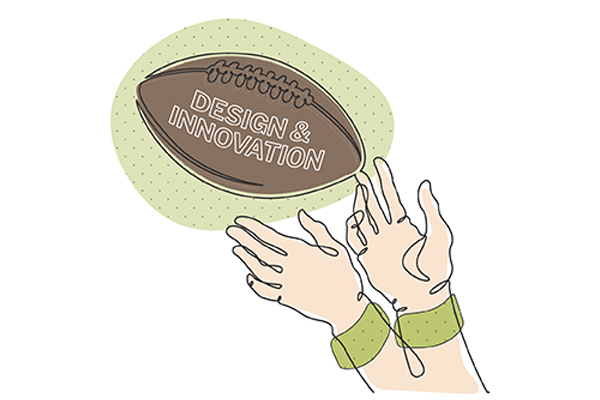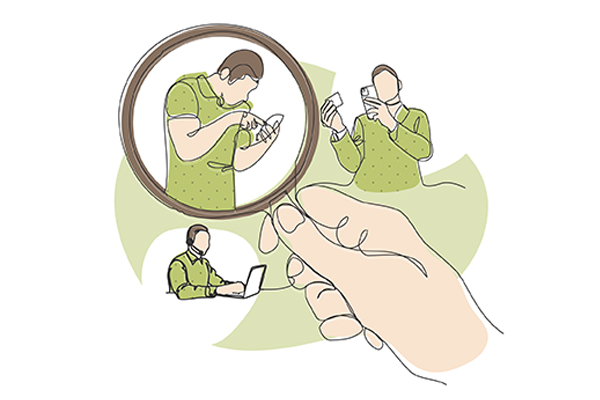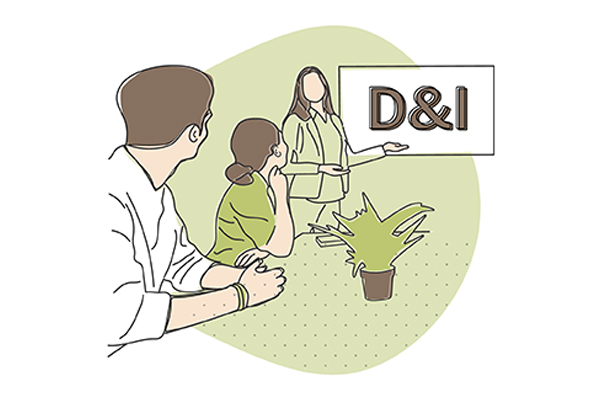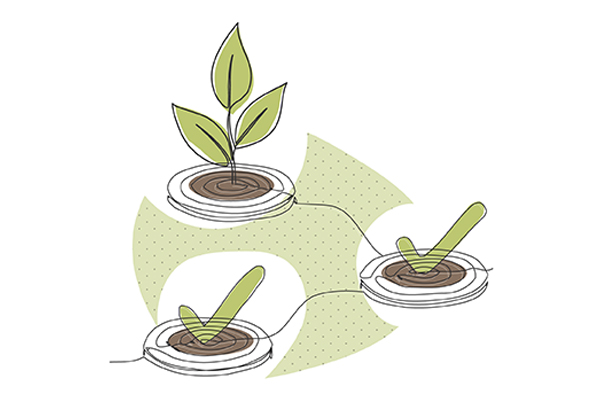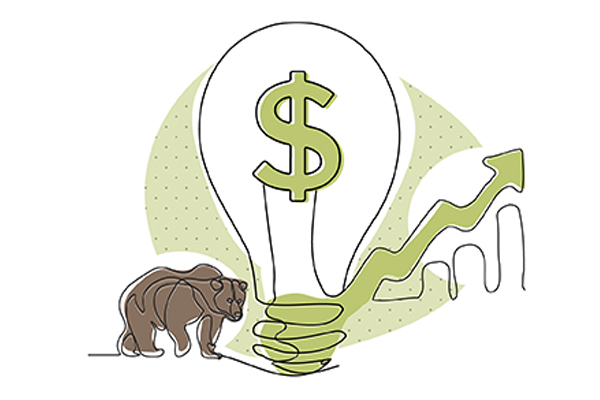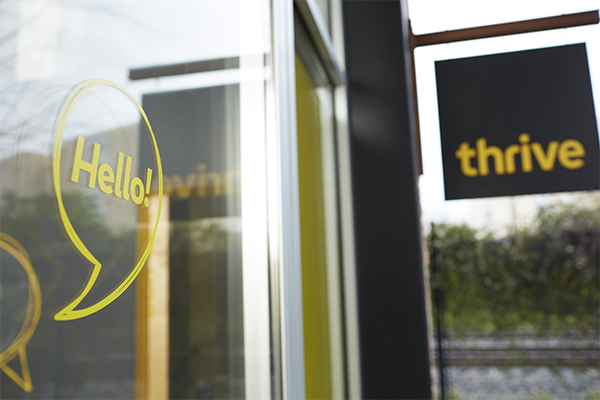The Empirical Argument Why Design and Innovation Fuel Growth in an Economic Downturn.
Investing in Design and Innovation during an economic downturn is critical for propelling businesses to long-term success. By focusing on value, growth, and consumer needs through a recession – even if it feels counterintuitive – you have the advantage of outshining your competition when times look up again! History shows that those who have the foresight to invest in Innovation while others hunker down and pause programs come out ahead after a downturn passes.
Design and Innovation are easy targets for cost-cutting when companies face pressure to shrink their budgets in times of uncertainty. Budget cuts may make for great sound bites at earning calls and improving the bottom line. But ultimately destroy a company’s capacity to prepare for future long-term growth. Economic downturns can be a difficult, anxiety-inducing period for companies, but they also offer significant new opportunities for business leaders. An impending recession doesn’t necessarily need to equate to a slowdown in your company if a proactive strategy is implemented quickly. Recessions can, in fact, act as innovation accelerators.
When consumers opt to save instead of spend during periods of financial uncertainty, innovators need to make informed moves to continue to appeal to their customers and add substance to their profoundly affected livelihoods and lifestyle. This may involve introducing game-changing offerings or simple and affordable solutions or revisiting a brand’s core value proposition to adapt to rapidly changing customer needs. Managing the dichotomy of pruning back expenses and innovating simultaneously is a critical challenge for recessionary leaders who want to maintain market share and strengthen their brands’ reputations.
Investing in design and Innovation is necessary for staying competitive and increasing customer loyalty during challenging economic times. Successful innovators use downturns as an opportunity to refine their product and service strategies, increase efficiency, and maximize their long-term growth potential. But as you would expect, the knee-jerk of most companies is to primarily focus on business continuity, fighting to maintain the status quo until the economy has stabilized and they can return to their design and innovation efforts. Britain’s wartime Prime Minister Winston Churchill famously said, “never let a good crisis go to waste.” He also said, “difficulties mastered are new opportunities won.” Supporting innovation-led growth has never been more critical if you wish to emerge from the last few years of pandemic turmoil ahead and plant the seeds for sustained growth long into the future.
Don’t Drop the Design and Innovation Ball.
If you have the resolve and bandwidth to challenge the prevailing headwinds and look for new opportunities to create value, you should go right ahead and invest in Design and Innovation. And if you are already investing you may want revisit some of your core assumptions about your customers as the economic climate continues to change. You will come out stronger and ready to compete at a pace that was seemingly not previously attainable. Data from past economic downturns suggests that companies who do invest in new product development, innovation and design during an economic crisis outperform the market on exiting the downturn and become more resilient in the face of future downturns.
“During the 2008 recession, companies that increased their R&D spending outperformed the overall market by 12% in the subsequent year.” — Harvard Business Review.
“Organizations that maintained their innovation focus through the 2009 financial crisis, emerged stronger, outperforming the market average by more than 30 percent and continuing to deliver accelerated growth over the subsequent three to five years.” — McKinsey & Company
Another study conducted by Bain & Company after the great recession of the late 2000s found that recessions shuffle the competitive deck much more than boom times do. The study found that one-fifth of the companies in their industry’s bottom quartile jumped to the top quartile, while a fifth of the top performers fell to the bottom quartile during the same recession. A pecking order shift this radical rarely happens during stable times.
3 Benefits of Continuing to Design and Innovate During A Downturn.
1. BE FIRST TO FRESH, DISRUPTIVE INSIGHTS
Admit it – don’t know your customer anymore. The COVID-19 pandemic sparked a shift in consumer values and behaviors that is here to stay. In times of upheaval, customers reassess their priorities and lifestyle, redefining what they deem valuable in life or as purchase options. To remain competitive, it’s crucial to re-examine if you truly know your customers.
ACTION: Adopt a proactive posture and approach to what might otherwise feel like a foreboding future. Look beyond your existing data and insights – it could limit your understanding of customer needs and the changes this new economic environment brings. Identify how you should change and what you can do to serve people better in this changing world. You can only fulfill people’s needs and desires when you truly understand who they are. Immerse yourselves in people’s lives, going where they live, work, and play to look at life as it’s actually lived. Armed with this intimate understanding of people’s values, needs, and behaviors, you will be able to define actionable insights for new product development, identify new ways to create value, and outsmart the competition.
2. INNOVATING IS ACTIVE RISK MANAGEMENT
Now is not the time to put Design and Innovation on the back burner. A downturn is a critical moment to increase your innovation efforts if you do not want to stagnate and be left behind by your competitors. If you are reallocating your organization’s dollars, you should avoid pulling back on any activities that feed and drive Innovation. Why? Design and Innovation reduce risk by continuing to populate the organization’s future roadmap for growth. A barren innovation pipeline will be a severe competitive disadvantage when the economic cycle shifts upward again, and you have to restart your innovation efforts rather than capture new growth opportunities.
ACTION: Focus on small, nimble teams. You don’t have to have a big team to achieve big things. In fact, when too many voices are involved in decision-making, Innovation goes out the window. So, if you’ve been operating a significant innovation budget and are suddenly seeing it curtailed, fear not and embrace the moment. Smaller, agile teams are more likely to carry their weight, make better decisions, and execute far more efficiently. Find the entrepreneurial thinkers in your organization who embrace ambiguity and solve problems autonomously. Those adept at finding the underlying motivations that drive people’s actions can re-examine existing conventions to challenge the status quo and turn knowledge into something actionable to achieve business objectives.
3. INNOVATION CAN BE FOR THE NOW AND THE NEW
Innovation carries a weight of expectation and can be intimidating, but it does not always have to be a significant company-wide undertaking solely focused on disruption and creating new-to-world revenue streams. In times of economic uncertainty, defending your core offerings and evolving them to meet shifting consumer priorities is often a better immediate investment. We use a broader definition of Innovation at THRIVE because it’s just as powerful in smaller doses. Not all Innovation has to be earth-shattering — it can be continuous and include minor improvements. You don’t hear much about core or incremental Innovation; it’s the poor cousin of Strategic Innovation, but it really counts. If you don’t want to stagnate in challenging times; it’s a surefire way to fail.
ACTION: Look within your organization’s existing business model and focus on improving your existing products or services by making small, incremental changes that benefit your customers. This Innovation approach does not typically require significant investment in research and development, making it highly executable, even in financially challenging times. Consider using design, technology, materials, and process changes to enhance and optimize the customer experience, reduce costs, and increase efficiency—re-mine past insights to find those overlooked opportunities often deemed insignificant or not big enough under normal operating conditions but extend or expand the value of the current business.
CONCLUSION
The desire to reduce spending during a recession is a natural impulse — mainly because being financially conservative makes good corporate sense on paper. However, the data and evidence paint a remarkably different picture. Recessions are the perfect time to invest in R&D, innovate with new product development, and come out thriving. Make sure you take a deep look at prioritizing Design and Innovation today to unlock post-recession growth.
________________________________________________________
Ready to prioritize Design and Innovation to unlock post-recession growth? THRIVE can help.
________________________________________________________
ABOUT THRIVE
THRIVE is a strategic design firm innovating at the frontiers of health and well-being.
We work with ambitious leaders to create experiences that people love through Informed Design™. Our work gives leaders, teams, and organizations the courage and conviction to move confidently forward and design what’s next. You can find our innovations positively impacting lives in homes, hospitals, and businesses around the world.
We help you design growth in eight ways:
1. SHIFT PERSPECTIVE: We help you see customers with fresh eyes so you can find disruptive insights that let you tap into game-changing opportunities.
2. ACTIVATE INSIGHT: We distill insights into simple, actionable frameworks that are powerful and easy to understand so you can make smart decisions.
3. SEIZE NEW OPPORTUNITY: We find new ways for you to compete and new markets to scale, then prioritize ideas with the greatest potential.
4. SHAPE THE FUTURE: We develop actionable plans that generate growth through innovation so you can set a vision and step into your future.
5. ACCELERATE TIME TO MARKET: Our processes enable you to operate agilely, seize opportunities and get products to market quickly and effectively.
6. CREATE SERIOUS BRAND LOVE: Our human-centered, holistic approach to brands delivers big-on emotion to keep consumers coming back.
7. CONQUER COMPLEXITY: We can help you tame complexity, achieve clarity and make products and services easy to understand and a joy to use.
8. EMPOWER CHANGE” We help businesses shift their mindsets, foster new partnerships, and create momentum for innovation and growth.
Contact Us today to setup a free consultation to discuss all your specific research, design and innovation needs. Collaboration begins with a conversation!
ATLANTA | CHICAGO

